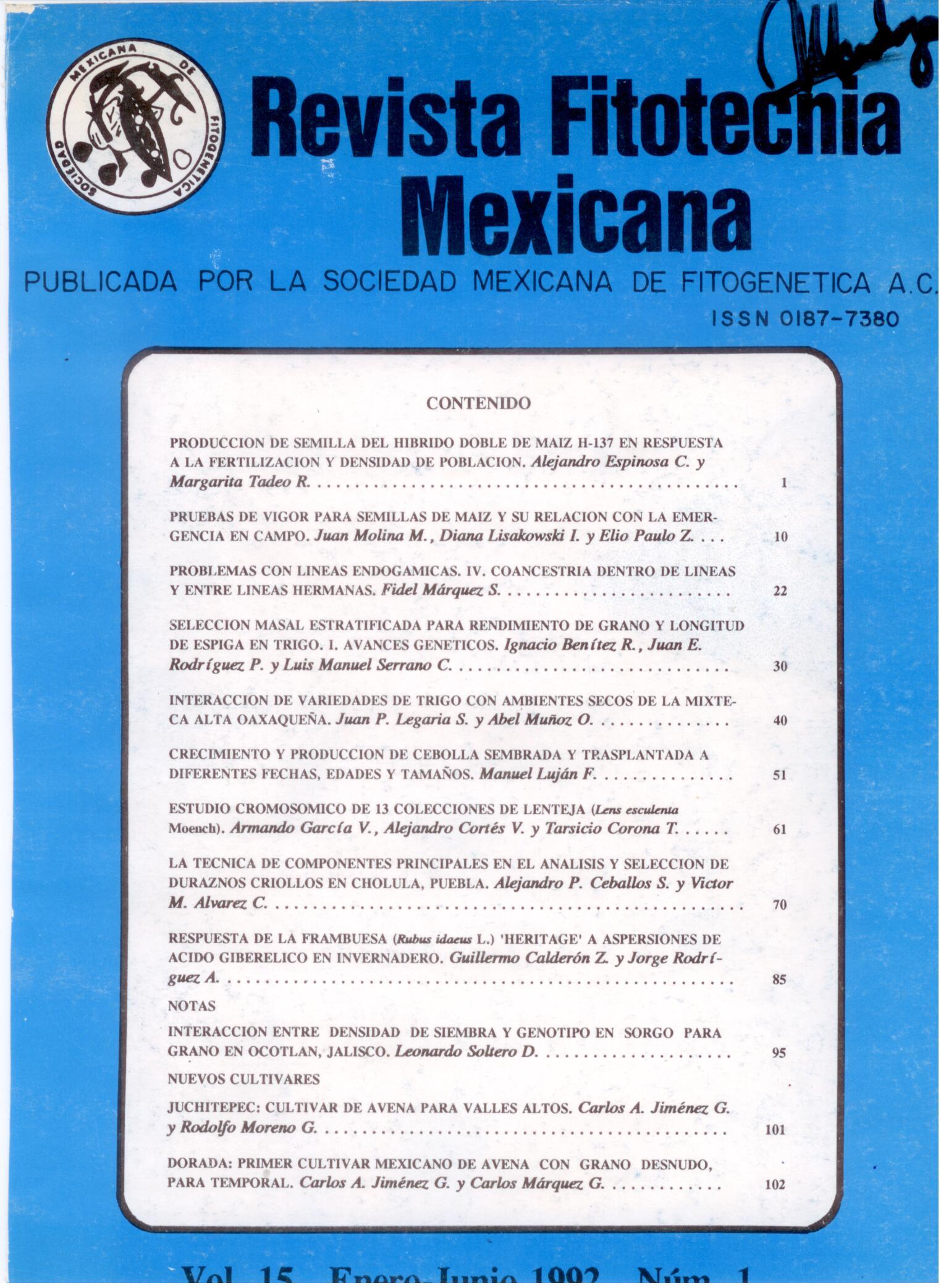INTERACTION BETWEEN SOWING DENSITY AND GENOTYPE IN SORGHUM FOR GRAIN IN OCOTLAN, JALISCO
Main Article Content
Abstract
In the region 'Ciénega de Chapala' of Jalisco State, plant population of sorghum (Sorghum bicolor L. Moench) planted under rainfed condition is variable with a range from 250 to 600 thousand plants per hectare. This variation in plant density is associated to: a) The dryland planting system (due to heavy cracking clay soils, and defficient drainage), b) The use of large cuantities of seed (almost 23 kg ha-1 ), and c ) A wide variation in the amount of the first rainfalls. The effects of six plant densities (300, 400, 500, 600, 700 and 800 thousand plants ha-1 ) on grain yield were evaluated on three hybrids (Dekalb D- 55, Dekalb D- 64 and Pioneer B- 816) at Ocotlán, Jalisco, in 1987. The experiment was carried out in a factorial randomized blocks design in split plot arrangement, replicated four times. Hybrids were the main plots and plant populations were the sub-plots. There were not significant yield differences among plant populations and the variety x plant interaction population was not significant either. The proportion of plants with panicles and the grains per panicle decreased as plant population increased. Grain number per panicle showed the most direct relation with yield. There were not significant differences on specific grain weight or on grain size among the extreme plant populations.

